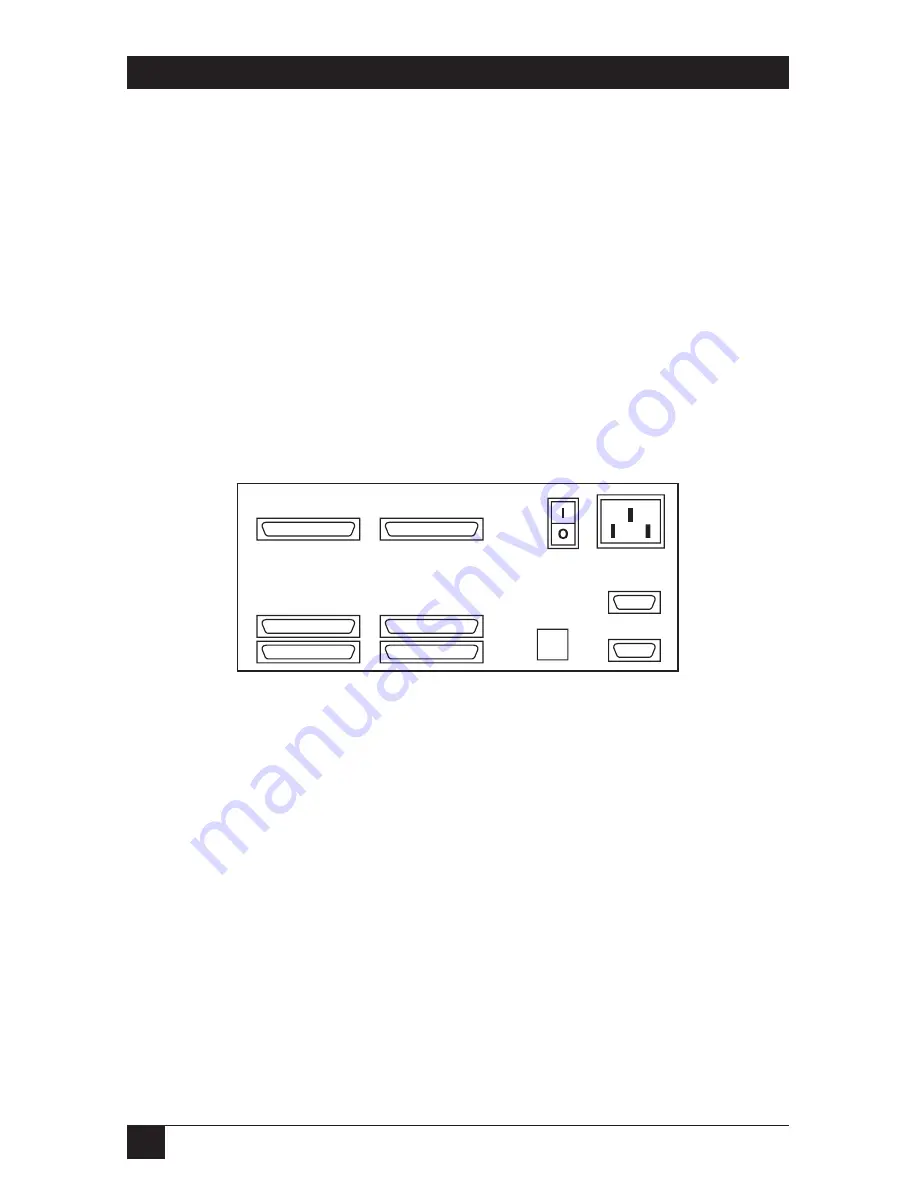
16
2 X 2 SCSI MATRIX SWITCH
3.5 SCSI Interface Cabling
Both versions of the 2 x 2 SCSI Matrix Switch have 68-pin high-density connectors.
Single-ended devices can have cable lengths up to 20 ft. (6 m). Differential or low-
voltage differential (LVD) devices can be connected with up to 82 ft. (25 m) of
cable.
Connect the host adapter or peripheral to the rear-panel connector using a
proper SCSI cable.
Section 6.1
describes standard SCSI-interface requirements.
When you connect devices to ports A and B, use one of the port connectors, not
both.
NOTE
Do not intermix single-ended/LVD and differential devices on any SCSI
chain unless a SCSI differential converter is used to convert from one
bus type to the other.
Figure 3-1. The SCSI Switch’s rear panel.
3.6 RS-232 Serial Port Cabling
The SCSI Switches have a DB9 female RS-232 serial port on their rear panel,
pinned so that you can use a straight-through-pinned DB9 male-to-female serial
cable (such as the one provided with the SCSI Switch) to connect it to the DB9
male serial ports on a PC. Pins 1, 2, 3, 5, and 6 (CD, TD, RD, SGND, and DSR
respectively) are functional on the SCSI Switch’s RS-232 port; Pins 4 and 8 (DTR
and CTS) are tied together; and Pins 7 and 9 (RTS and RI) have no function.
3.7 Ethernet LAN Port Cabling
The SCSI Switches have an RJ-45 female 10BASE-T Ethernet port on their rear
panel. Use a standard straight-through-pinned twisted-pair cable (CAT5 or higher)
to connect this port to an Ethernet hub, switch, or router. To connect this port
directly to a 10BASE-T port on a computer, you’ll need to use a cross-pinned cable.
















































